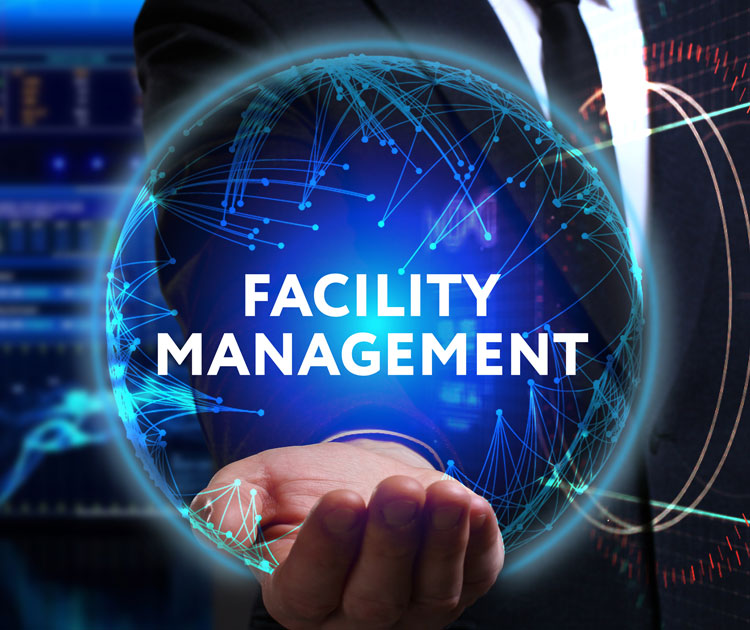Top Benefits of Total Facility Management for Streamlined Procedures
Total Facility Management (TFM) represents a strategic technique to enhancing functional efficiency by incorporating various solutions, such as maintenance and safety, under a unified management structure. The question stays: what specific advantages can companies harness from adopting TFM, and just how might these benefits transform their functional landscape?
Enhanced Operational Performance
Improved functional efficiency is a main advantage of implementing total facility management (TFM) techniques. TFM includes a comprehensive method to taking care of a facility's resources, procedures, and framework, ultimately improving procedures. By settling various services-- such as upkeep, protection, room, and cleaning management-- TFM minimizes redundancies and enhances control amongst various functional features.
The assimilation of technology further amplifies this performance. Advanced facility management systems supply real-time information analytics, making it possible for facility supervisors to make educated choices that enhance process and resource allowance. Anticipating maintenance methods, for instance, expect equipment failures before they take place, lowering downtime and expanding property life-span.
Furthermore, TFM promotes standardized processes throughout numerous divisions, making sure consistency and quality in solution distribution. This harmony decreases operational disruptions and cultivates a much more collective workplace. As an outcome, workers can concentrate on their core responsibilities, driving performance and improving overall efficiency.

Cost Decrease and Savings
Carrying out total facility management (TFM) not just increases functional performance however additionally significantly adds to set you back reduction and cost savings. By settling various services under a solitary management structure, organizations can remove redundancies and streamline processes, consequently lowering operational expenses. TFM makes it possible for better procurement methods, enabling firms to negotiate bulk acquiring arrangements with suppliers and service companies, causing reduced rates.
Moreover, TFM emphasizes precautionary maintenance, which lessens unanticipated failures and extends the lifespan of crucial devices. This positive technique not just minimizes repair costs but also enhances the reliability of facilitiess, ensuring uninterrupted operations. Additionally, power efficiency efforts, usually an essential emphasis of TFM, bring about considerable savings on utility bills, as facilitiess are maximized for minimized power intake.
Improved Source Management
Effective resource management is a keystone of total facility management (TFM), allowing companies to enhance using their possessions and labor force. By carrying out TFM methods, organizations can comprehensively examine their resource allowance, making sure that every property is used effectively and properly. This all natural technique permits the recognition of underperforming sources and the potential for reallocation or improvement.
On top of that, TFM assists in the assimilation of innovation for real-time surveillance of sources, which aids in anticipating upkeep needs and stopping expensive downtime. By leveraging data analytics, companies can make informed decisions concerning source implementation, eventually improving productivity and minimizing waste.
Moreover, TFM promotes a society of continual improvement, urging teams to frequently review and fine-tune their resource management practices. Total Facility Management. This proactive stance not only decreases functional disruptions however additionally cultivates innovation, as staff members are encouraged to suggest improvements based upon their direct experiences with resource application
Streamlined Communication Channels
In total facility management, structured communication networks play an important role in promoting collaboration and efficiency across groups. Efficient communication makes certain that all stakeholders, including facility managers, maintenance staff, and service suppliers, are straightened with organizational goals and functional needs. By establishing clear lines of interaction, teams can promptly address worries, share updates, and apply great site remedies, consequently minimizing downtime and enhancing performance.
With centralized communication platforms, info is easily available, enabling real-time updates on upkeep demands, source allotment, and project timelines. This transparency not only decreases misunderstandings yet likewise equips workers to make enlightened choices rapidly. Additionally, streamlined interaction facilitates better control throughout emergency situations, making sure that all personnel are educated and can react quickly.

Raised Focus on Core Activities
A crucial advantage of total facility management is the enhanced concentrate on core tasks, enabling companies to focus on their key service objectives - Total Facility Management. By contracting out non-core features such as upkeep, protection, and cleansing, business can reroute their resources and power in the direction of calculated efforts that directly add to their competitive advantage and development
Total facility management incorporates various functional jobs under a solitary umbrella, fostering performance and decreasing redundancy. This consolidation not just explanation improves procedures however also improves responsibility, making certain that every facet of the facility runs harmoniously without diverting focus from what truly matters-- core service functions.
Additionally, this approach allows staff members to devote their effort and time to tasks that drive development and enhance client complete satisfaction, as opposed to getting bogged down by operational obstacles. With a trustworthy facility management companion managing daily operations, organizations can attain better agility, react swiftly to market changes, and preserve a sharper concentrate on their mission.
Ultimately, enhanced emphasis on core activities leads to enhanced general efficiency, permitting companies to reinforce their market placement and satisfy their critical objectives a lot more properly. - Total Facility Management
Verdict
In final thought, Total Facility Management considerably enhances operational effectiveness by settling crucial services and leveraging data analytics for informed decision-making. Cost reductions and improved resource management contribute to overall savings, while streamlined interaction networks foster cooperation amongst stakeholders.
Total Facility Management (TFM) represents a tactical method to improving operational efficiency by integrating various solutions, such as upkeep and protection, under a unified management framework.Enhanced operational performance is a key advantage of carrying out total facility management (TFM) approaches. Advanced facility management systems give real-time data analytics, enabling facility supervisors to make educated decisions that boost operations and source allotment.Executing total facility management (TFM) not just improves functional effectiveness however also significantly adds to cost decrease and financial savings.Efficient resource management is a cornerstone of total facility management (TFM), allowing organizations to maximize the use of their assets and labor force.